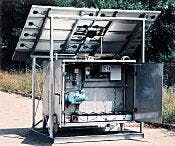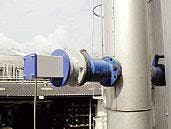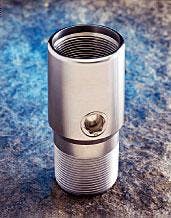Solar powered well injection system
Here's a solar powered injection system for remote inland oil and gas wells that require corrosion inhibitors.
The Model EKO is self-contained and features a high-efficiency, sealless diaphragm metering pump that can inject corrosion inhibitors at up to 72 gal/day against 3,700 psi. Providing consistent, uninterrupted operation, the pump requires less than 160 w of dc power, which is provided by a solar panel array, battery pack, and controls—all supplied in a ready-to-run package.
Consisting of an all stainless steel pump skid with rain covers and sealed-tight enclosures, the system can be configured to user requirements including remote control and injection rate feedback. The leaktight pump has two PTFE diaphragms that isolate the process fluid, providing double containment with zero leakage, run-dry tolerance, and overload protection.
Source: American Lewa Inc., 132 Hopping Brook Rd., Holliston, MA 01746.
New pump, panel designed for process operations
A new explosionproof Anchor electric pump and a new control panel (panel shown here) are designed for pumping hazardous fluids or pumping in explosive environments and volatile locations such as refineries and petrochemical and chemical plants.
The new armored metal explosionproof box, designed to keep the pump controls safe from possible explosions, meets UL 698, Class I, Div. 5, Group D classifications.
The piston pump's top head drive allows the explosionproof motor and electrical power cords to be located outside of any hazardous, potentially hazardous, and explosive environments in the sump or well.
It protects electric pumps by providing a controlled recovery rate, eliminating pump wear and tear, controlling stop and start frequencies, and extending and retracting speed rates.
The electric pump, a positive displacement piston type, is designed with a mechanical drive mechanism at the top of the well or tank. The pump can be set for a low flow range of 5 gpm or less.
With shallow or deep recovery capabilities, the lightweight pump can produce 400 psi of pressure
Source: Blackhawk Environmental Co., 21 W. 161 Hill Ave., Glen Ellyn, IL 60137.
New flow monitor for process gas requirements
The new IR 4 flow monitor is designed for process gas requirements, including the most inhospitable applications.
By combining laser infrared absorption, time of flight, and cross correlation IR signature techniques, the IR 4 is able to determine flow accurately in most gas streams, including dirty or hot applications up to 2,200° F.
The unit incorporates analog outputs, serial PC communications, a tactile membrane for full customer configuration, and is capable of driving a remote display.
The IR heads contain no moving parts.
The tool measures and calculates flow, process temperature and pressure, velocity, volumetric flow, and mass flow.
Source: Epsilon Technologies LLC, 112 Plant Ave., Wayne, PA 19087.
New hydraulic tubing drain
This new hydraulic tubing drain is a nonmechanical device used to drain, circulate, or equalize pressures from inside the well tubing string to the annulus.
It is simple in design, using applied hydraulic pressure to burst the rupture membrane, opening an unrestricted 7/8 in. fluid port to the casing annulus.
The device provides a positive indication of an open drain, has no moving parts, eliminates the need for shear pin devices, and can be serviced in the field.
The drain is available in single or dual port bodies of alloy steel, with a stainless rupture plug housing, and an Inconel rupture disk.
One rupture plug fits all tubing sizes and comes in12 standard burst pressures from 1,500 psig to 7,000 psig in 500 psig increments.
Source: Fike Corp., Box 610, Blue Springs, MO 64013.






